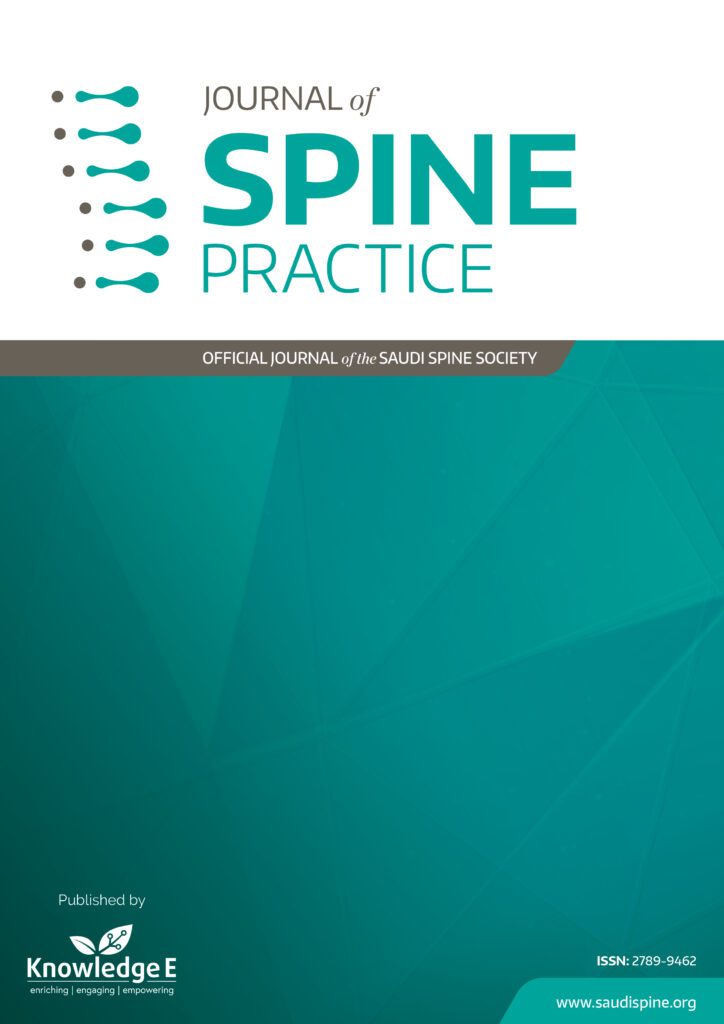
Journal of Spine Practice
ISSN: 2789-9462
Leading research in all spine subspecialties focusing on orthopaedic spine, neurosurgery, radiology, and pain management.
Atlas fracture after electroconvulsive therapy
Published date: Dec 16 2022
Journal Title: Journal of Spine Practice
Issue title: Journal of Spine Practice (JSP): Volume 2, Issue 1
Pages: 23 - 27
Authors:
Abstract:
Background: Since the first-time electroconvulsive therapy was performed in 1938, it remains to this day as one of the most effective forms of treatment for patients with major depression and other psychiatric conditions. It works by a controlled electric current passed through the scalp and selected parts of the brain to induce a grand mal seizure. Due to its mechanism of action, the possibility of developing a physical trauma although rare, especially if done under an adequate modified form, is still possible.
Case: A young male presented to our Emergency Department after his routine electroconvulsive therapy with neck pain. Imaging of the neck showed fracture of the Atlas bone. Patient was treated conservatively.
Conclusion: Electroconvulsive therapy is one of the safe and common treatment modalities used for mental health issues around the world. However, injuries such as fractures have been reported following the procedure. As per our literature review, this is the first instance of Atlas fracture reported after electroconvulsive therapy worldwide.
Keywords: Atlas, Spine, Fracture, Electroconvulsive therapy (ECT)
References:
[1] Rudorfer MV, Henry ME, Sackeim HA. Electroconvulsive therapy. In: Tasman A, Kay J, Lieberman JA, ed. Psychiatry. 2nd ed. John Wiley & Sons Ltd.; 2003; 1865–901.
[2] Li M, Yao X, Sun L, Zhao L, Xu W, Zhao H, et al. Effects of electroconvulsive therapy on depression and its potential mechanism. Front Psychol 2020; 11: 80.
[3] McDonald WM, Weiner RD, Fochtmann LJ, McCall WV. The FDA and ECT. J ECT 2016; 32(2): 75–77.
[4] Luccarelli J, Henry ME, McCoy TH Jr. Quantification of fracture rate during electroconvulsive therapy (ECT) using state-mandated reporting data. Brain Stimul 2020; 13(3): 523–524.
[5] Göterfelt L, Ekman CJ, Hammar Å, Landén M, Lundberg J, Nordanskog P, et al. The incidence of dental fracturing in electroconvulsive therapy in Sweden. J ECT 2020; 36(3): 168–171.
[6] Sarpel Yaman, Togrul E, Herdem M, Tan I, Baytok G. Central acetabular fracture-dislocation following electroconvulsive therapy. J Trauma 1996; 41(2): 342– 344.
[7] Andrade C, Rele K, Sutharshan R, Nilesh S. Musculoskeletal morbidity with unmodified ECT may be less than earlier believed. Indian J Psychiatry 2000; 42(2): 156–162.
[8] Bum-Sung C, Jong-Myeong, Hwa A. Young woman who suffered a fractured vertebra during electroconvulsive therapy. Psychiatr Ann 2018; 48(11): 532–535.
[9] Vynichakis G, Grivas TB, Moschouris H, Filippou D, Skandalakis P. Atlas fracture with concomitant vertebral artery hypoplasia, a rare but potentially hazardous combination: A case report. Cureus 2019; 11(3): e4172.
[10] Mead LB II, Millhouse PW, Krystal J, Vaccaro AR. C1 fractures: A review of diagnoses, management options, and outcomes. Curr Rev Musculoskelet Med 2016; 9: 255– 262.
[11] Kakarla UK, Chang SW, Theodore N, Sonntag VK. Atlas fractures. Neurosurgery 2010; 66(3 Suppl): 60–67.
[12] Harshavardhana NS, Dabke HV. Risk factors for vertebral artery injuries in cervical spine trauma. Orthop Rev (Pavia) 2014; 6(3): 5429.